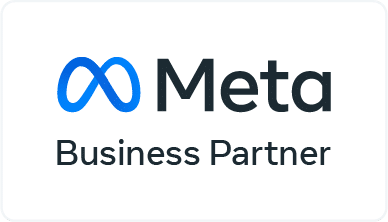Our industry loves an acronym but what do they all mean. Below you can see 30 popular digital marketing acronyms and their definitions.
- ALTV – Average Lifetime Value – The lifetime value of a customer to an organisation.
- CMS – Content Management System – A system used to manage the content of a Website.
- CPA – Cost Per Action – An online advertising pricing model, where the advertiser pays for each specified action – for example, an impression, click, form submit (e.g., contact request, newsletter sign up, registration etc.), double opt-in or sale.
- CPL – Cost Per Lead – An online advertising pricing model, where the advertiser pays for an explicit sign-up from a consumer interested in the advertiser’s offer. It is also commonly called online lead generation.
- CPM – Cost per Mille – The price of 1,000 advertisement impressions on one webpage. If a website publisher charges $2 CPM, that means an advertiser must pay $2 for every 1,000 impressions of its ad.
- CPV – Cost Per View – The default way to set the price you’ll pay for your AdWords video ads
- CRO – Conversion Rate Optimisation – The method of creating an experience for a website or landing page visitor with the goal of increasing the percentage of visitors that convert into customers.
- CTA – Call To Action – An instruction to the audience to provoke an immediate response, usually using an imperative verb such as “call now”, “find out more” or “visit a store today”.
- CTR – Click Through Rate – A way of measuring the success of an online advertising campaign for a particular website as well as the effectiveness of an email campaign by the number of users that clicked on a specific link.
- GA – Google Analytics – A service offered by Google that generates detailed statistics about a website’s traffic and traffic sources and measures conversions and sales.
- GDN – Google Display Network – The largest contextual advertising network available on the Internet today.
- GTM – Google Tag Manager – A free tool for managing marketing and tracking tags on your site.
- GWT – Google Webmaster Tools – A no-charge web service by Google for webmasters. It allows webmasters to check indexing status and optimize visibility of their websites. It has tools that let the webmasters: Submit and check a sitemap.
- KPI – Key Performance Indicator – A measurable value that demonstrates how effectively a company is achieving key business objectives.
- MCC – My Client Centre – Used as an “umbrella account”, and provides a high-level overview and management opportunities for individual Google AdWords accounts within.
- PPC or CPC – Pay per Click – Also called cost per click, is an internet advertising model used to direct traffic to websites, in which advertisers pay the publisher (typically a website owner) when the ad is clicked. It is defined simply as “the amount spent to get an advertisement clicked.”
- PR – Page Rank – A link analysis algorithm used by Google to help determine the relative importance of a website. Every website is given a Google PageRank score between 0 and 10 on an exponential scale.
- QS – Quality Score – A variable used by Google, Yahoo! (called Quality Index), and Bing that can influence both the rank and cost per click (CPC) of ads.
- ROAS – Return on Advertising Spend – Calculating the ROAS allows online marketeers to see whether their advertising budget generates sufficient revenue. To calculate ROAS, take the revenue generated by a campaign or ad source and divide it by its media expenses.
- ROI – Return on Investment – A performance measure used to evaluate the efficiency of a media investment. To calculate ROI, the benefit (return) of an investment is divided by the cost of the investment; the result is expressed as a percentage or a ratio.
- RON – Run of Network – A form of internet marketing where an online advertising campaign is applied to a wide collection of websites without the ability to choose specific sites
- ROS – Run of Site – Run-of-site is similar to run to network, except the ads appear on an individual site instead of many sites.
- RSS – Really Simple Syndication – Uses a family of standard web feed formats to publish frequently updated information: blog entries, news headlines, audio, video.
- RTB – Real Time Bidding – Refers to the means by which ad inventory is bought and sold on a per-impression basis, via programmatic instantaneous auction, similar to financial markets.
- SEM – Search Engine Marketing – A form of Internet marketing that involves the promotion of websites by increasing their visibility in search engine results pages (SERPs) through optimization and advertising.
- SEO – Search Engine Optimisation – The process of affecting the visibility of a website or a web page in a search engine’s “natural” or un-paid (“organic”) search results.
- SERP – Search Engine Results Page – The listing of results returned by a search engine in response to a keyword query. The results normally include a list of items with titles, a reference to the full version, and a short description showing where the keywords have matched content within the page.
- SMO – Social Media Optimisation – The use of a number of social media outlets and communities to generate publicity to increase the awareness of a product, brand or event.
- TLD – Top Level Domain – A top-level domain (TLD) is the last segment of the domain name. The TLD is the letters immediately following the final dot in an Internet address.
- USP – Unique Selling Proposition – The term is used to refer to any aspect of an object or service that differentiates it from similar objects or services.
Over time I will be adding to this list.
What’s your favourite acronym? Which ones should I add to the list?






